Intersections: supporting diverse trans communities
Our identities and experiences do not exist in a vacuum. When supporting students and staff, it may be useful to consider the other ways in which they might experience barriers or disadvantage, and how to develop effective affirmative support.
There are a number of key dates and observances throughout the year which may form valuable opportunities to increase dialogue and awareness around diverse trans communities in your institution. Click here to view and download our Calendar of Key Dates for recognition, dialogue and celebration for trans, gender diverse and intersectional communities.
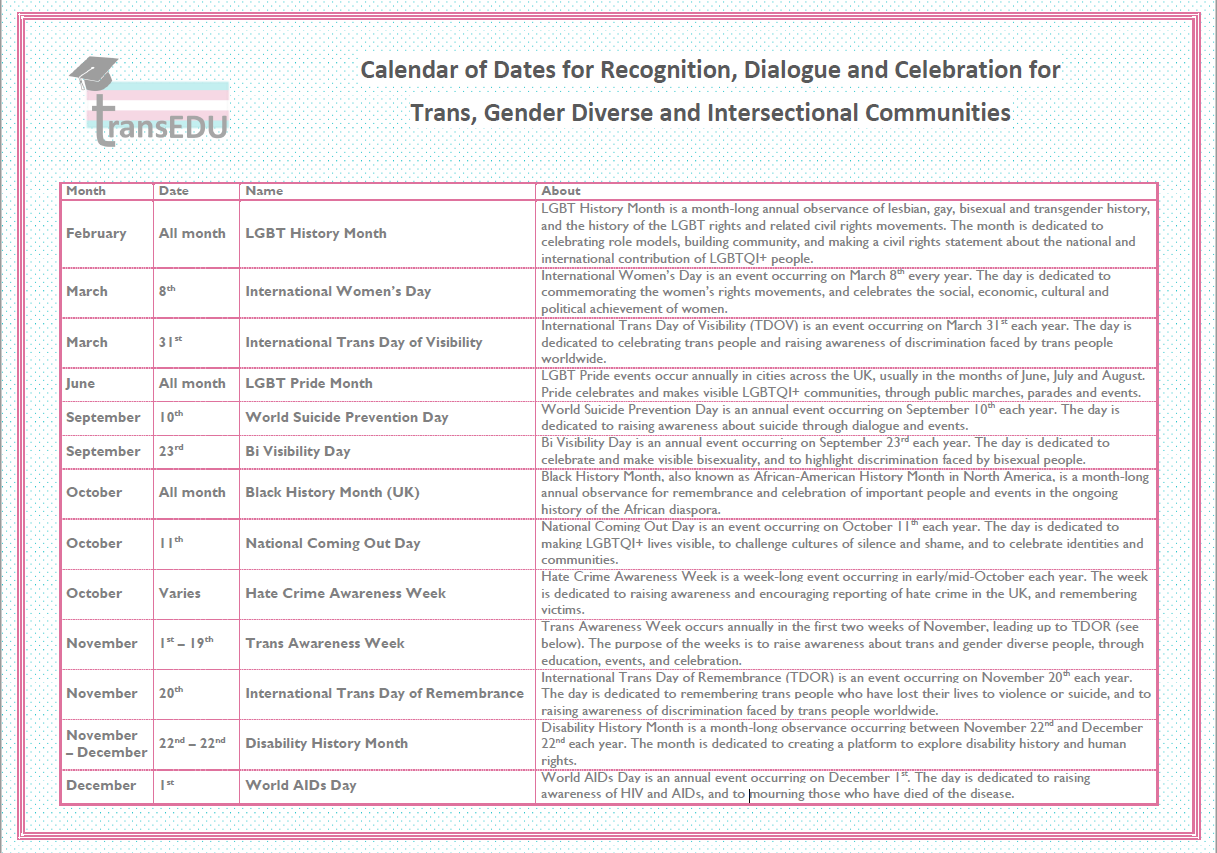
Disability and long-term health conditions
Your student support, wellbeing, disability and HR teams should already have a thorough working knowledge of how to support and develop provision for disabled applicants, students, and staff. These teams should be your first point of contact when seeking guidance on specific support and provision for disabled or D/deaf trans and non-binary people in your institutions.
When developing provision, initiatives and events, it is vital to consider accessibility and to take all practical steps to ensure these settings are accessible. Consider:
- Physical access - e.g. step-free access, wheelchair access, toilets and changing facilities, accessibility via public transport.
- Blind & visually impaired access - e.g. audio description, sighted guides.
- Mental health and neurodivergent access - e.g. relaxed spaces, access to quiet spaces, clear instructions and signposting.
- Learning disability access - e.g. relaxed spaces, quiet spaces, clear instructions and signposting.
Click here for more guidelines on how to develop accessible provision, events and initiatives.
What is Transgender? Click here to access LGBT Health and Wellbeing's easy read guide on gender identity. This guide was developed by George Burrows to support people with learning disabilities who are exploring their gender.

[Image courtesy of LGBT Health and Wellbeing, 2017]
D/deaf students and colleagues
The term ‘D/deaf’ is used to "encapsulate the many identities and cultures within D/deaf communities. This term incorporates Deaf, deaf, deafened, and hard-of-hearing individuals and communities. For many people, Deaf (capitalised ‘D’) indicates a distinct identity, culture and language – namely British Sign Language (BSL). Most often, Deaf is regarded as a category distinct from disabled" (Lawrence, 2016: 7).
When working with D/deaf trans and gender diverse people, it is vital to lead from the requirements of the individual applicant, student or colleague. Some tips include:
- Be sure to recruit BSL interpreters who have previously worked with trans and non-binary clients, and who are competent at interpreting dialogue of this nature. If the student or colleague is unhappy with the interpreter selected, respect this and agree to seek an alternative.
- Give the student or colleague the option to choose their own BSL interpreter. They may already regularly work with someone who they trust and are confident in.
- Ensure all of your video and audio-visual resources are subtitled or close-captioned. Subtitles and captions are useful for a wide range of people, both D/deaf and non-D/deaf. Aegisub offer excellent free open-access subtitling software.
Black, Asian & Minority Ethnic / People of Colour
It is vital to consider how your approach to developing and delivering provision will be explicitly inclusive of trans and non-binary people who are Black, Asian, minority ethnic, and/or people of colour. To learn more about developing provision, refer to "Inclusivity – Supporting BAME Trans People" by Sabah Choudrey.
Click here for the online version, or go to the GIRES website to order hard-copies.
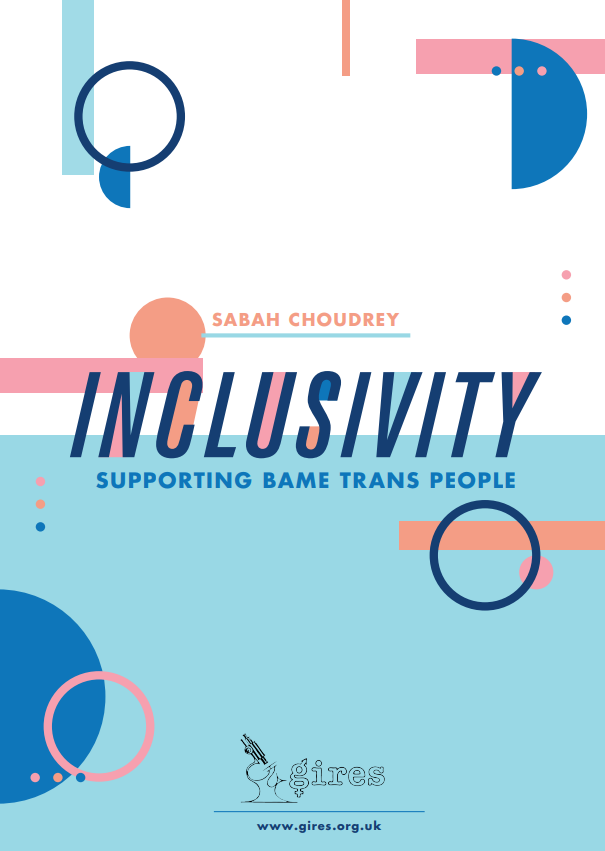
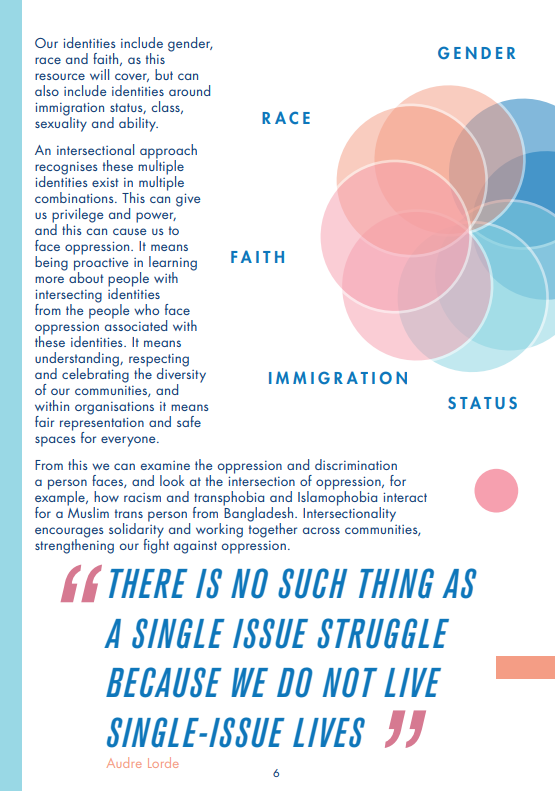
[Images from 'Inclusivity: Supporting BAME Trans People' by Sabah Choudrey, with graphic design by Soofiya Andry.]
A Roadmap to Inclusion: Supporting Trans People of Faith, by Shaan Knan
Click here the to access the PDF document via the GIRES website.
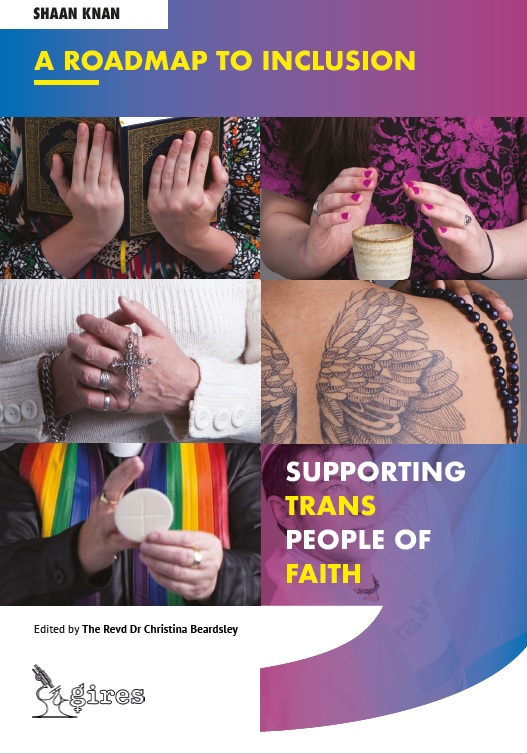
[Image: Front cover of 'A Road Map to Inclusion – Supporting Trans People of Faith' by Shaan Knan]
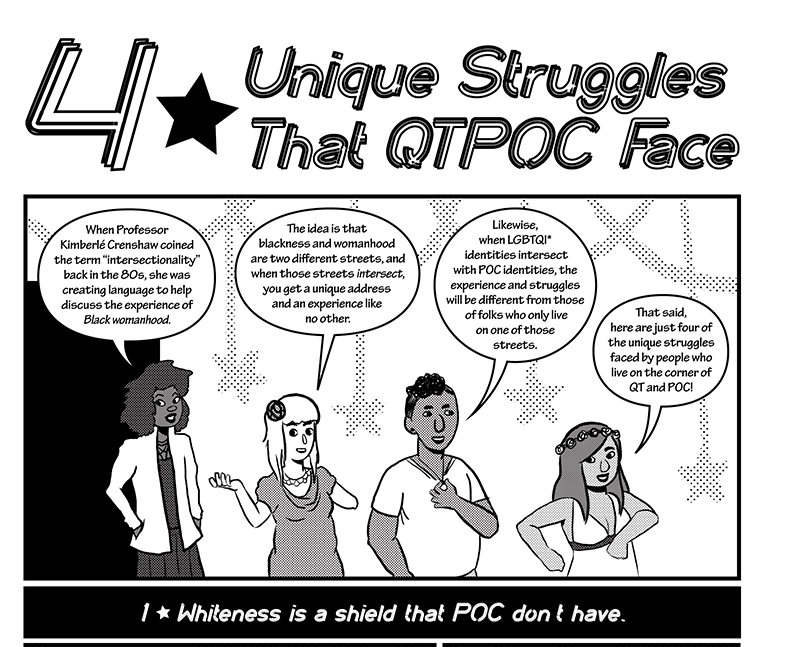
[Image: 4 unique struggles that QTPOC face. Illustration by Joamette Gil]
Refugee and Asylum Seeking People
For further information on the immigration process for LGBT+ refugees and asylum seekers, refer to this overview from Stonewall. There are a variety of social and support groups across the UK for asylum seekers who are LGBT+. These include:
References:
Lawrence, M. (2016) Barriers to Access: Report on the barriers faced by young disabled and D/deaf people in accessing youth arts provision in Scotland. Available here.
Please note: TransEDU, nor the individuals and institutions affiliated with TransEDU, are not responsible for the content of external links or external services / organisations.